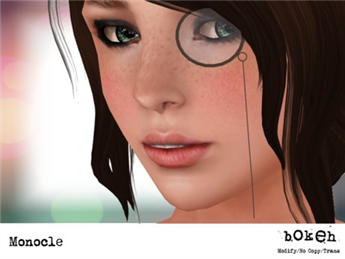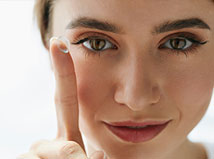Monovision LASIK or Reading Glasses?

Monovision LASIK derives organically from the monocle, the primordial vision correction method by means of you holding a glass lens between your eyebrow and cheekbone. Of
All right. So what if you are farsighted or have developed presbyopia? You still want to read and have near-vision for other purposes as well.
If you are farsighted (not presbyopic), this is easier. The monovision correction for this condition might involve only a pair of eyeglasses, with one lens being uncorrected; the other with a prescription enabling you to read. If you don’t want glasses, you can wear a contact lens in one eye for reading, and see far away with your other eye. We’re just talking possibilities here. You might not want to wear glasses or a contact lens. You might want LASIK. The monovision LASIK concept for farsightedness (both eyes) is to correct the vision of one eye only, with which you can read, right? You can still see far with your other (uncorrected) eye. Like wearing a monocle…almost.(Image source: https://marketplace.secondlife.com/p/E3D-Enchant3D-Monocle-Boxed/2284648?id=2284648&slug=E3D-Enchant3D-Monocle-Boxed.)
Monovision LASIK for presbyopia
 Monovision LASIK for presbyopia requires another step. If you have developed presbyopia (which typically begins after age 40) and you can see far with both eyes, you have essentially the same situation as a farsighted person. You have LASIK for one eye so you can see near (with the corrected eye).
Monovision LASIK for presbyopia requires another step. If you have developed presbyopia (which typically begins after age 40) and you can see far with both eyes, you have essentially the same situation as a farsighted person. You have LASIK for one eye so you can see near (with the corrected eye).
If you are presbyopic and nearsighted in both eyes, LASIK can correct one eye for distance vision and correct the other eye for reading—true monovision—with one eye see far, one eye
The American Academy of Ophthalmology reports on clinical trials with 172 patients in 2007: “LASIK monovision correction represents a viable and increasingly popular method of correcting presbyopic and pre-presbyopic patients considering refractive surgery. Crossed monovision may be applied successfully to appropriately chosen patients.” (http://www.aaojournal.org/article/S0161-6420(07)01052-4/abstract)
So if you tried everything else for reading or near-vision—bifocal or multifocal-lens glasses or contacts—and you’re not satisfied, there are other options which might suit you better. A consultation with a LASIK surgeon may provide just the relief you’re looking for. Visit North Carolina Eye, Ear, Nose & Throat for Chapel Hill LASIK information!
(“Eagles don’t wear glasses.” “Yes, but can they read?” Image source:



